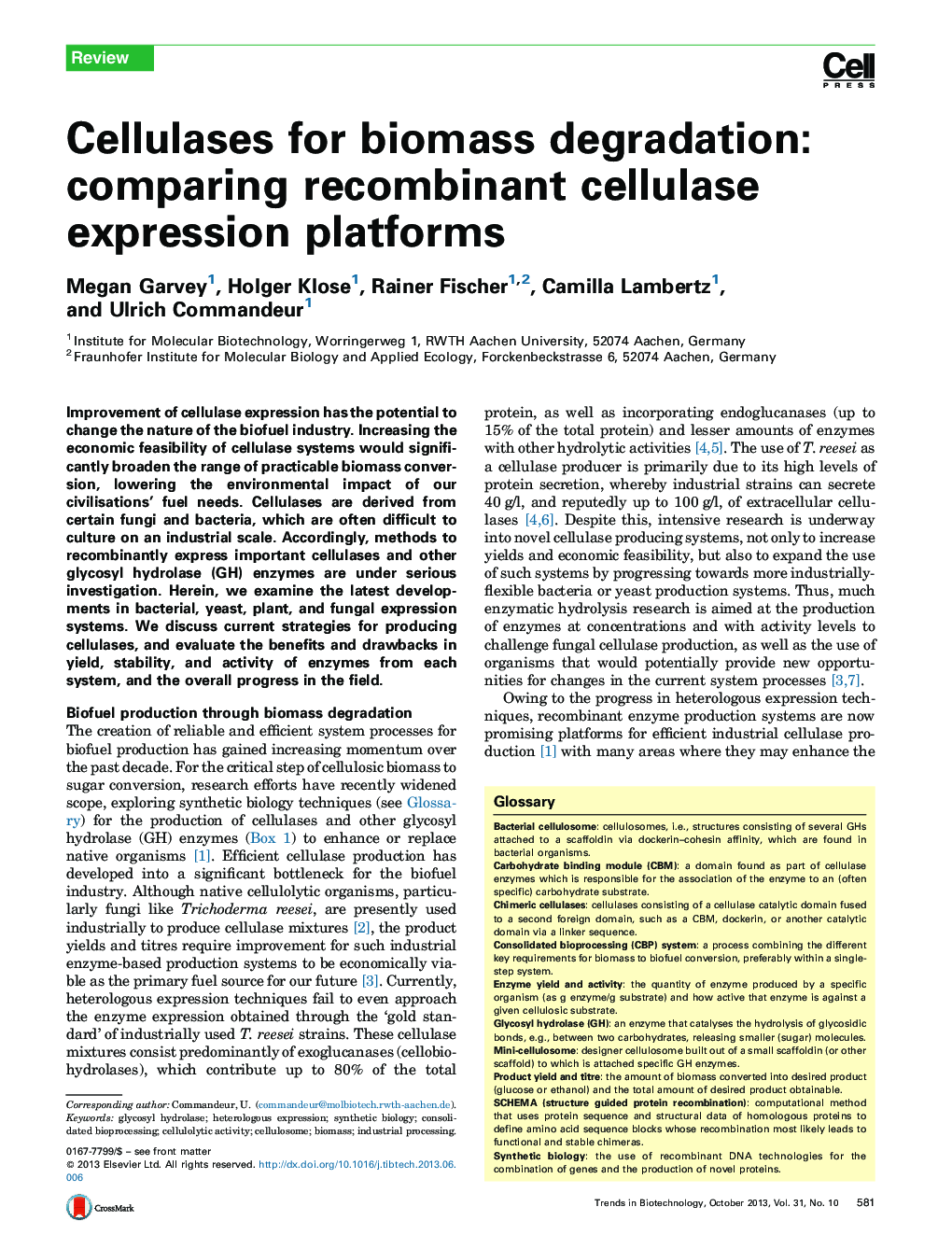| Article ID | Journal | Published Year | Pages | File Type |
|---|---|---|---|---|
| 37241 | Trends in Biotechnology | 2013 | 13 Pages |
•Each organism has different strengths and weaknesses in recombinant glycosyl hydrolase (GH) expression.•Advances using yeasts and plants show particularly great promise.•Advancements in enzyme surface display, and the creation of chimeras and cellulosomes.•Approaches using multiple strategies of GH expression may be desirable.
Improvement of cellulase expression has the potential to change the nature of the biofuel industry. Increasing the economic feasibility of cellulase systems would significantly broaden the range of practicable biomass conversion, lowering the environmental impact of our civilisations’ fuel needs. Cellulases are derived from certain fungi and bacteria, which are often difficult to culture on an industrial scale. Accordingly, methods to recombinantly express important cellulases and other glycosyl hydrolase (GH) enzymes are under serious investigation. Herein, we examine the latest developments in bacterial, yeast, plant, and fungal expression systems. We discuss current strategies for producing cellulases, and evaluate the benefits and drawbacks in yield, stability, and activity of enzymes from each system, and the overall progress in the field.
